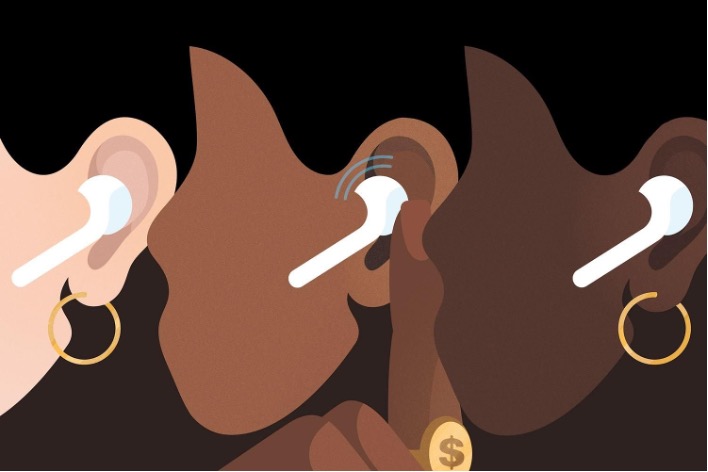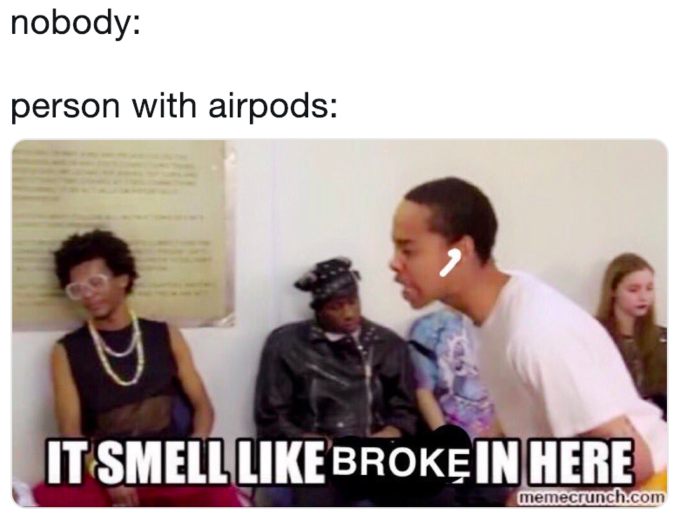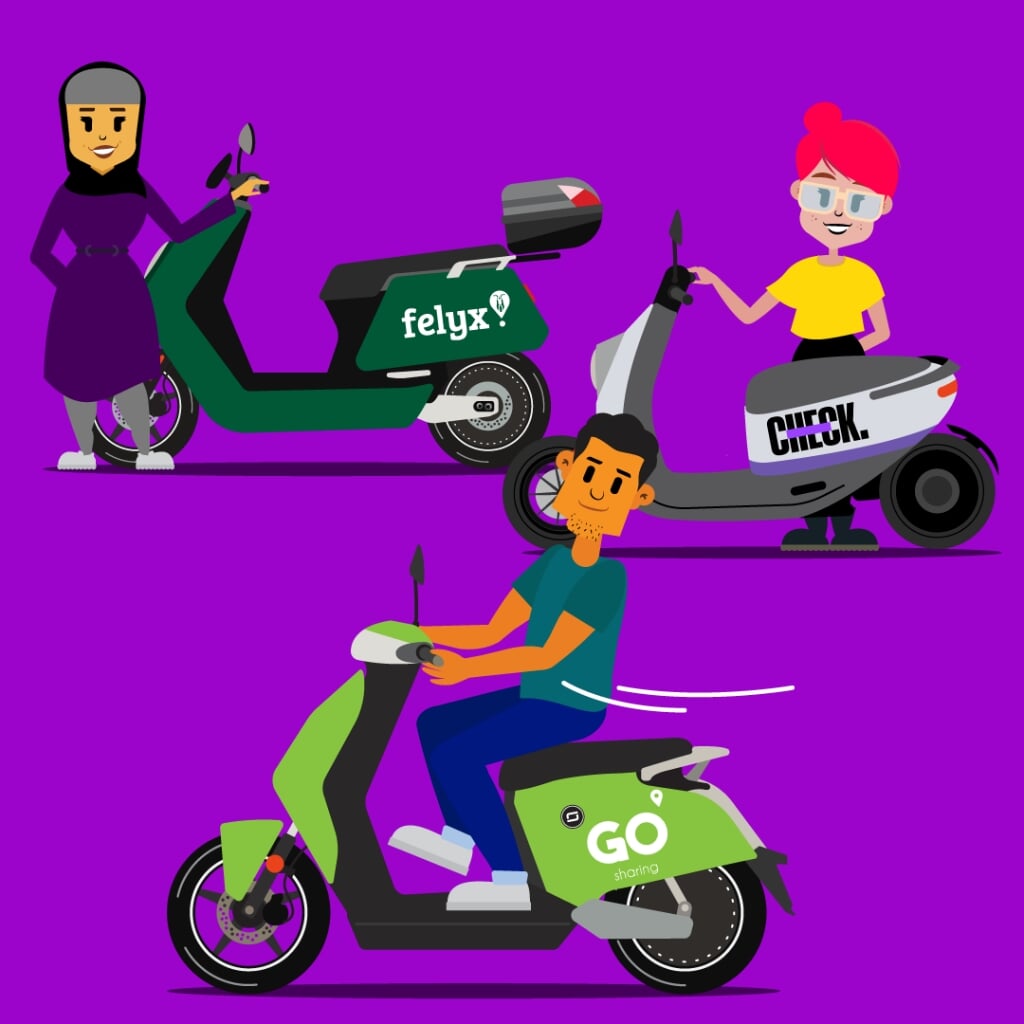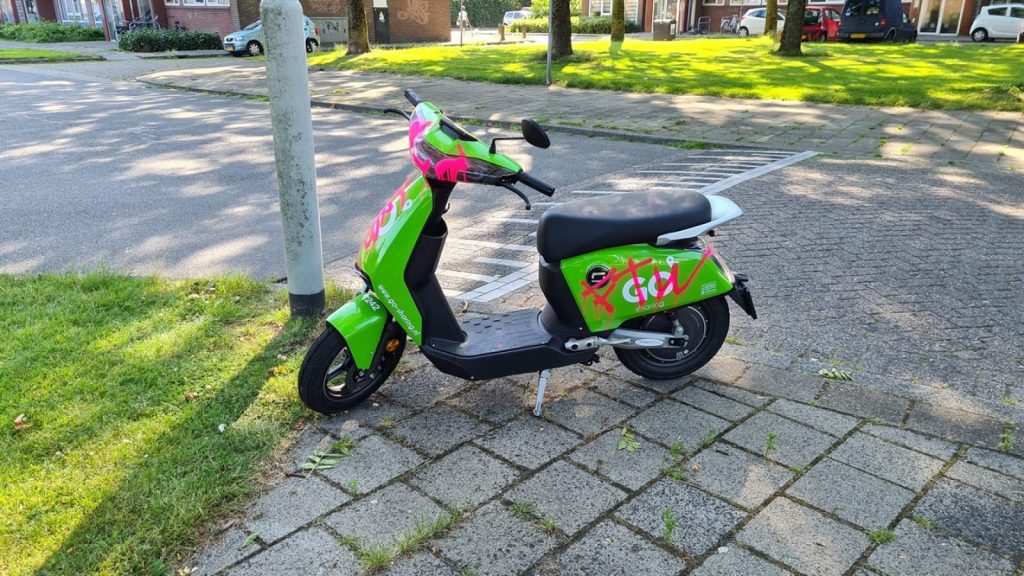The introduction of AirPods and the changes made to the iPhone, inspired a completely new wireless trend and imposed a new way of using headphones to customers. Even when the wired earbuds were not an issue to be solved to begin with, they have been replaced by a wireless version. It is a very clear example of how companies can impose innovations on customers and drive change. Moreover, the initial dismay experienced by many Apple users, when the AirPods and new line of iPhones (without headphone jack) were introduced, shows how innovation might not completely match the spirit of the moment. Interestingly however, the wireless trend is currently accepted as normal by most, meaning that customers have adapted to and adopted the wireless innovations pushed by Apple. As such, I believe this is an interesting business case to further examine.

In my opinion, this innovation does not truly categorize as a disruptive innovation. Disruptive innovations typically make a product/service more attainable and affordable to a wider/new audience and are introduced by a smaller/new player. One could argue that Apple was a new player in a way, as it was a newcomer in the (nearly nonexistent) wireless earbud market. Yet, Apple is and was one of the largest incumbents in the phone market. In addition, Apple’s shift towards wireless has made listening to music on an iPhone less attainable and more expensive (on the short to medium term). That is, whereas iPhones used to have a headphone jack and charging port, they are now only have a charging port. Customers can buy special wired earbuds and insert it into the charging port, but these earbuds are not included in the iPhone box anymore. Moreover, using wired earbuds means the iPhone cannot be charged at the same time (as the charging port needs to be used for both), unless the user purchases a special splitter. Of course, there is also the option to buy the AirPods, but these come at a rather significant price of €180 and upwards. In general though, the purchase price of an iPhone is already relatively high compared to competitors, meaning that iPhone owners might be more willing to pay for expensive services/products (including the AirPods). Although the AirPods were more of a niche product at first, the concept has become a true hype and has now become more mainstream. That is, competitors have caught on and cheaper alternatives have been introduced.
Another intriguing aspect of the AirPods hype, are its societal implications. More specifically, some people apparently see or saw AirPods as a symbol of status and wealth. Especially in its initial stages, the concept of AirPods was totally new and out of reach for most, because of the relatively high purchase price. The people that did make the leap and bought AirPods, and could afford to do so, in a way felt privileged. As a result, the internet was flushed with social media posts, memes, videos, articles, etc. In my view, this image has changed to a certain extent, as AirPods and similar (cheaper) alternatives have become much more mainstream in the Western World.
The described business case does in my opinion give some interesting food for thought. The world was baffled and not enthusiastic about AirPods and the new iPhones (without headphone jack) at first but has now truly embraced the changes. The AirPods have apparently even become a status symbol to some. The wireless trend has become the new normal, meaning that many (if not all) Apple competitors have followed. This business case shows the power of Apple and how Apple can impose innovation on users, without initial happiness/enthusiasm from the customer. What do you think? Is it okay for a company to have this much power and impose innovations on customers? Do you think the wave of wireless innovations is a change for the better? Do you think AirPods are a status symbol? Etc.
References:
- https://www.nytimes.com/2016/09/08/technology/apple-iphone.html?searchResultPosition=7
- https://www.nytimes.com/2016/09/08/technology/iphone-7-apple-headphone-jack.html?searchResultPosition=9
- https://www.nbcnews.com/think/opinion/apple-s-airpods-changed-everything-they-gave-company-near-monopolistic-ncna1055656
- https://www.wsj.com/articles/do-airpods-make-you-look-rich-these-millennials-think-so-11550591284
- https://www.inverse.com/article/20690-ways-apple-airpods-disrupt-headphones-jack-iphone-7
- https://twitter.com/WAFCNathan/status/773598072559591425?ref_src=twsrc%5Etfw%7Ctwcamp%5Etweetembed%7Ctwterm%5E773598072559591425%7Ctwgr%5E%7Ctwcon%5Es1_&ref_url=https%3A%2F%2Fwww.inverse.com%2Farticle%2F20690-ways-apple-airpods-disrupt-headphones-jack-iphone-7
- https://medium.com/@evangelo/up-in-the-air-what-airpod-memes-tell-us-about-the-future-of-marketing-3623b7714ccd






